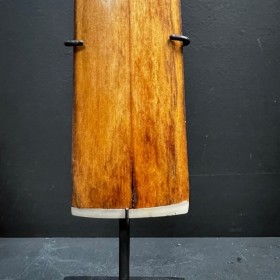
Red Sea Whip Coral on brass stand - Ellisella grandis -...
Flame gorgon - Red Whip Coral on pedestal - Ellisella grandis from Indonesia











Rostrum of swordfish (Medium) - Xiphias gladius
Mounted on a free-standing base
Non-contractual Photos. All the peaks are different
Rostrum of swordfish (Medium) - Xiphias gladius
The swordfish (of Latin Gladius) has to its name to the aspect of its rostrum (or beak), similar to a blade of sword, and to its capacity split the water uninhibitedly and the speed.
The rostra of swordfish are traditionally of use to the manufacturing of weapons in New Guinea.
The rostrum is simply placed in a system with claws, it can be removed easily, there were no holes drilled underneath to hold it.
Material: bone
Origin: Indonesia
Polishes and varnishes Dimensions: between 70 and 77cm with base (10x7cm)
Non-contractual Photos. All the peaks are different
Flame gorgon - Red Whip Coral on pedestal - Ellisella grandis from Indonesia
Test of sea urchin pencil
Species: phyllacanthus imperialis Indian Ocean
5/7cm
Large starfish
Species: Poraster superbus
30/35cm
Duo of small Plococidaris verticillata sea urchins
Also known as Sputnik
Under a bell
Crustacean: Common Barnacle - Balanus perforatus
Mounted on a square wooden base
The Papal Mitre shell - Mitra papalis
Dimensions: 10/15cm
Crustacean: Common Barnacle - Balanus perforatus
Mounted on a round wooden base

Rostrum of swordfish (Medium) - Xiphias gladius
Mounted on a free-standing base
Non-contractual Photos. All the peaks are different










